
Timeline: 1917-2022
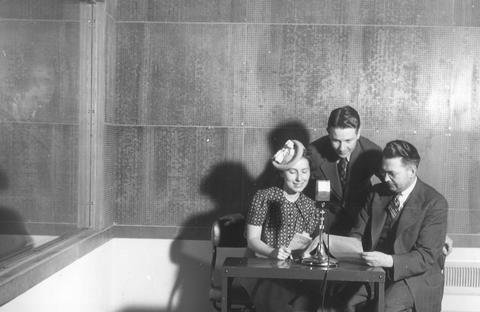
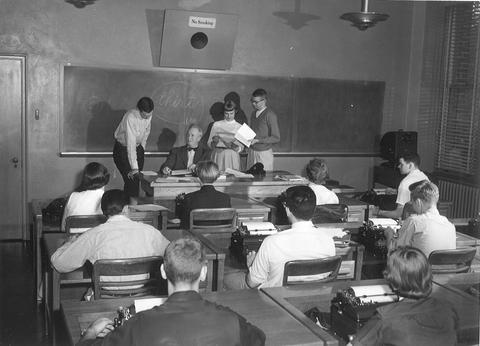
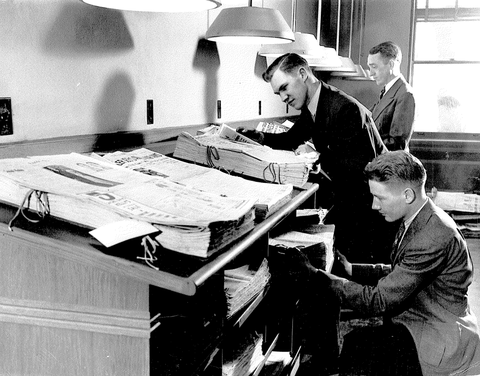
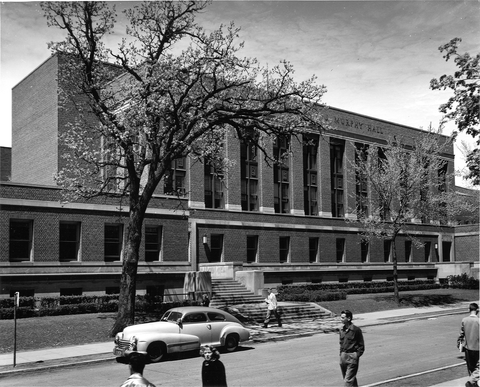
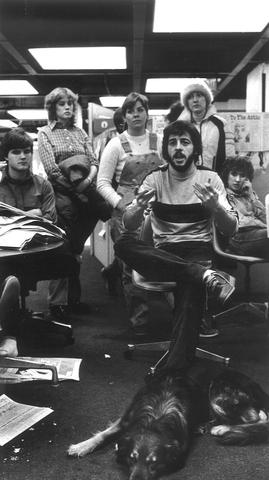

1917: Journalism education at the University of Minnesota formally began when plans are drawn for a major curriculum with courses offered in continuity.
1918: William J. Murphy, publisher of the Minneapolis Tribune, bequeaths a portion of his estate to the University for “the establishing and maintaining of a course of instruction in journalism.” The value of the donation is about $735,000 today.
1922: The department of journalism is established within CSLA and Reuel R. Barlow, a journalist for “The New York Evening Post” and other publications, is named administrator with the title, “instructor in charge.”
1924: The department of journalism increases from 30 students in 1920 to 110 in 1924. The School offers courses on six different topics of professional journalism and doubles the number of typewriters in the school.
1929: The department is located in Folwell Hall and the old Music Building until moving into Pillsbury Hall in 1929.
1930: A former Seattle and New York newspaperman who obtained his Ph.D. from Wisconsin, Ralph D. Casey, becomes the head of the journalism department. Also, the first master’s degree of the journalism program is awarded.
1930: First M.A. in journalism is awarded
1934: Mitchell V. Charnley, former newspaperman, magazine editor and Iowa State College professor, is hired to teach reporting and to develop the magazine journalism courses.
1935: Ralph O. Nafziger, a former newspaperman and Wisconsin Ph.D. candidate, joins the faculty to be a research specialist in international communication and the foreign press. He also teaches news editing and public affairs reporting.
1938: The Board of Regents authorize the construction of Murphy Hall.
1940: Murphy Hall opens and the journalism department moves from Pillsbury Hall.
1941: The department officially became the School of Journalism in the CSLA.
1944: A School of Journalism Research Division – the first of its kind in the nation – is established. The purpose is to stimulate and conduct applied and fundamental research to communications, secure research grants, and encourage graduate researchers to come to the University of Minnesota.
1946: Due to students entering the University under the G.I. bill, enrollment in the School grew from 200 in 1945 to nearly 500 in 1946.
1948: The School launches an advertising degree program. Minnesota is one of the first 35 journalism schools designated “accredited” by the American Council on Education for Journalism.
1950: The School’s library expands with the establishment of the Thomas Heggen Memorial Library. Heggan, a School alum, wrote “Mister Roberts,” a fictional book based on his experiences in a theatre in WWII.
1951: The School creates a Ph.D. program. The first Ph.D. is awarded in 1956.
1958: Robert L. Jones becomes director after Ralph Casey retires. A fierce proponent of research and the school’s research division, Jones helped integrate new technologies into the curriculum and taught advertising during his time at the school.
1960s: Major curriculum changes are made. R. Smith Schuneman develops a photojournalism program. That same year, the faculty develops a curriculum statement that establishes specializations in broadcast journalism, magazine journalism, creative graphic arts, photojournalism and public relations.
1965: A major revision of the undergraduate curriculum takes place with the addition of an introduction to journalism course and the creation of a course in basic visual communication.
1966: To represent the expansion of studies, the school adds “Mass Communication” to its name.
1969: For the first time, the national organization for professional journalists and journalism students, Sigma Delta Chi, allows women to become members.
1960s and ’70s: The ’60s and ’70s are a period of tremendous growth. The number of undergraduates grows from 300 in 1960 to 602 in 1970 and then to 1,156 in 1980. Special entrance requirements are initiated in the mid-1970s because the growth has surpassed available space.
1978: F. Gerald Kline takes over after Robert L. Jones’ 20 years as director.
1978: The Premack Awards are founded. For 35 years, the Premack Public Affairs Journalism Awards honored excellence in Minnesota journalism. The awards program was funded in posthumous honor of Minneapolis Tribune reporter and editor Frank Premack.
1979: The Minnesota Journalism Center, funded by a gift from John and Elizabeth Cowles, is created to promote interaction between journalism academics and professionals.
1980: The library is expanded and named after Eric Sevareid. Sevareid graduated from the University of Minnesota and became a broadcast reporter for CBS who specialized in WWII coverage. He visited the school to honor its renaming. (The Heggen Memorial Library remains.)
1983: The Alumni Society Board launches the popular Alumni Mentor Program, which has matched hundreds of students with alumni in the industry during its almost 40-year history.
1984: The Silha Center for the Study of Media Ethics & Law is established with a gift from Otto and Helen Silha.
1985: After Director Kline took a position in the University’s president’s office, Dan Wackman serves as interim director of the SJMC for one year.
1986: Mary Ann Yodelis Smith, Ph.D., becomes director of SJMC. Before, she was an administrator at the University of Wisconsin and president of the Journalism Council.
1988: The China Times Center for Media and Social Research is established from funding by the China Times. Professor Chin-Chuan Lee, international relations specialist, is the director.
1988: The organization for journalists and journalism students officially changes its name from Sigma Delta Chi to the Society of Professional Journalists. The SPJ in 2021 has around 6,000 members.
1989: The former head of the Communications Research Center, Dan Wackman, becomes director of SJMC. He started at the school in 1971 as an assistant professor.
1995: When Wackman moves on to another position, the CLA Dean appoints Robert Scott as the acting director of SJMC. Scott is a professor in the speech department and serves as acting director for three years.
1997: A special University president-created Communications Studies Task Force report calls for a $9 million renovation of Murphy Hall, with new labs, updated equipment and new faculty lines, in addition to the founding of a “New Media Institute” and a state-of-the-art information center that brings journalism and mass communication education at Minnesota back to its original prominence.
1998: After directing graduate and undergraduate studies at the SJMC, Al Tims becomes the acting director. He is appointed full director in 1999 and leads the school into the new millennium.
1999: Construction begins for the Murphy Hall renovation.
2000: The Murphy Hall renovations finish. The School receives a transformational $10 million gift from the Hubbard Broadcasting Foundation. Over the years, the money is used for scholarships, fellowships and a digital media lab in the basement of Murphy Hall.
2004: The School launches an M.A. program in Strategic Communication.
2004: The work of the school faculty, director Al Tims, CLA Dean Steven Rosenstone and university administrators is recognized by an independent review team designed to assess the program’s progress. The independent review lavishes praise on the newly-revitalized SJMC, noting that the work to rejuvenate the program had been “truly transformative within the SJMC” and applauds the school’s “responsiveness and foresight, [which] has allowed it to reclaim its place among the elite schools of journalism in the country.”
2005: The School beings participating in the U.S. Department of State’s Edward R. Murrow Program for Journalists, welcoming journalists from around the world to the School for programming and special events.
2007: First cohort of the School’s Master’s in Strategic Communication program graduates.
2010: The School holds the first See Change: The Power of Visual Communication conference to bring creative professionals together to share thoughts and inspiration about visual communication.
2012: The School undergoes accreditation, an extensive review conducted every six years by the Accrediting Council on Education in Journalism and Mass Communications (ACEJMC). The School is visited by a site team of four journalism educators and professionals. After its review, the site team recommends full accreditation.
2017: Elisia Cohen becomes director of the School.
2017: The University Senate All-Honors Committee and the Board of Regents approve renaming SJMC to the Hubbard School of Journalism and Mass Communication.
2019: The School moves from three undergraduate tracks of study to three distinct majors: journalism, strategic communication and mass communication.
2020-2021: As the COVID-19 epidemic hits the U.S. in the Spring 2020 semester, the School, faculty and students adjust to a mostly online learning environment.